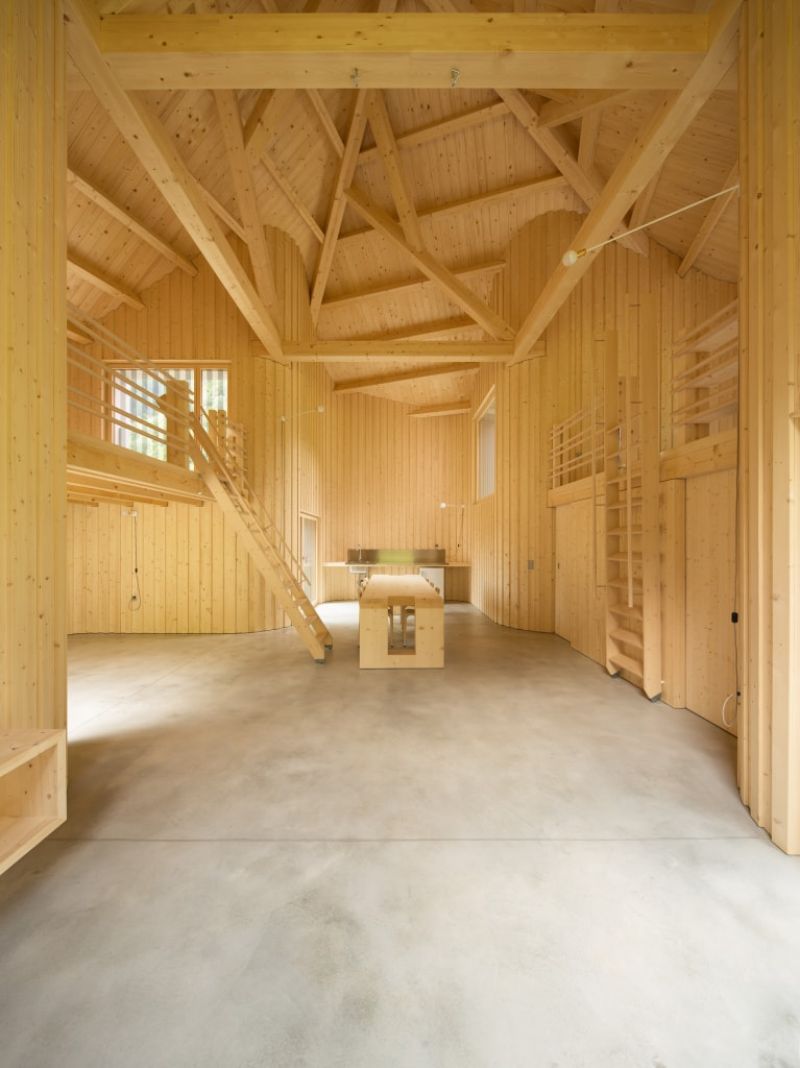Swisshouse XXXII
Swisshouse XXXII Sinusoïde, permanent work in situ / with the artist Daniel Buren, in collaboration with Mario Cristiani, Galleria Continua
Swiss House XXXII represents the constant commitment to build with respect for places, to give meaning to our every gesture to help our understanding of civilization. It is a work of integration between art and architecture, a habitable sculpture and an architecture that needs art to be completed, even from the profile of its primary function, that of protecting man from the elements. We involved Daniel Buren because during the years of our training, through his recognizable signs, he taught us the pleasure of synthesis in observing the beauty of nature. Today we have one of his permanent works in the heart of the Swiss Alps. We enter this space, manufactured by the place: a fantastic, yet real environment. As right as we want the world to be. The Calanca valley, when you go there you forget things as you know them. The journey to the bottom is short, but it is a lifelong journey.
Once inside, the valley closes, the door of dreams opens in front of you. Rocky walls, forests, fields are soft, undulating, the work of centuries of men and women warms us. The rock tells us the story of the birth of the earth, and how much it had to move, to give us this lucky place. Rossa is a place of memory where simplicity has become civilization. Our task is to continue this art of love for the territory through humble but indelible gestures. It is a village in the Swiss Alps at 1100 meters above sea level almost at the end of the valley, where nature expresses itself by overruling the will of human beings and helps them to understand their presence in the world.
Building in this context means following the signs of the past in their essence, of the peace of a place that catalyzes energies that are difficult to describe. The apparent urban simplicity of the place is a complex interweaving of balances between men and the stones used to build their habitat. Nothing here is new. Each object is devoured and amalgamated by history and nature and where the physical and spiritual commodification of the territory is still resisted. Swiss House arises spatially along a line of volumes of patrician houses that form an agglomeration around the village church. With the new volume this axis is underlined both physically (reprise of the "patrician" volume) and conceptual (affirmation of a will beyond our permanence).
The cross in vertical projection, the rounding of the edges and the simple torsion of the roof make it dynamic and revisit the archetype of the "house". The one designed by the children: two vertical lines, two diagonal flaps, holes to let in the light. It is the same thing-home, but completely different. It is the archetype reinvented to testify that the reasons for doing are inexhaustible and that buildings are our public art, just as the nature that surrounds us is not always the same, but changes and takes on new meanings depending on how we observe it. It is an enclosure that defines a dynamic space. The points of view and the penetrations of light work on the perception of time, from the absence to the instantaneous scrolling speed of the images. It is an unbroken line of emotions. Each opening is calibrated and oriented on selected views of the landscape. Each point of view is different and each breath of the landscape suggests different things. The underground parts are in reinforced concrete, the upper volume entirely in wood, without interpreting the traditional construction type of the Alps, but using it as it is. Swisshouse Rossa is the archetype of the construction entirely made of solid wood. They are the surrounding vertical trunks forests that become a fence and then a home.










